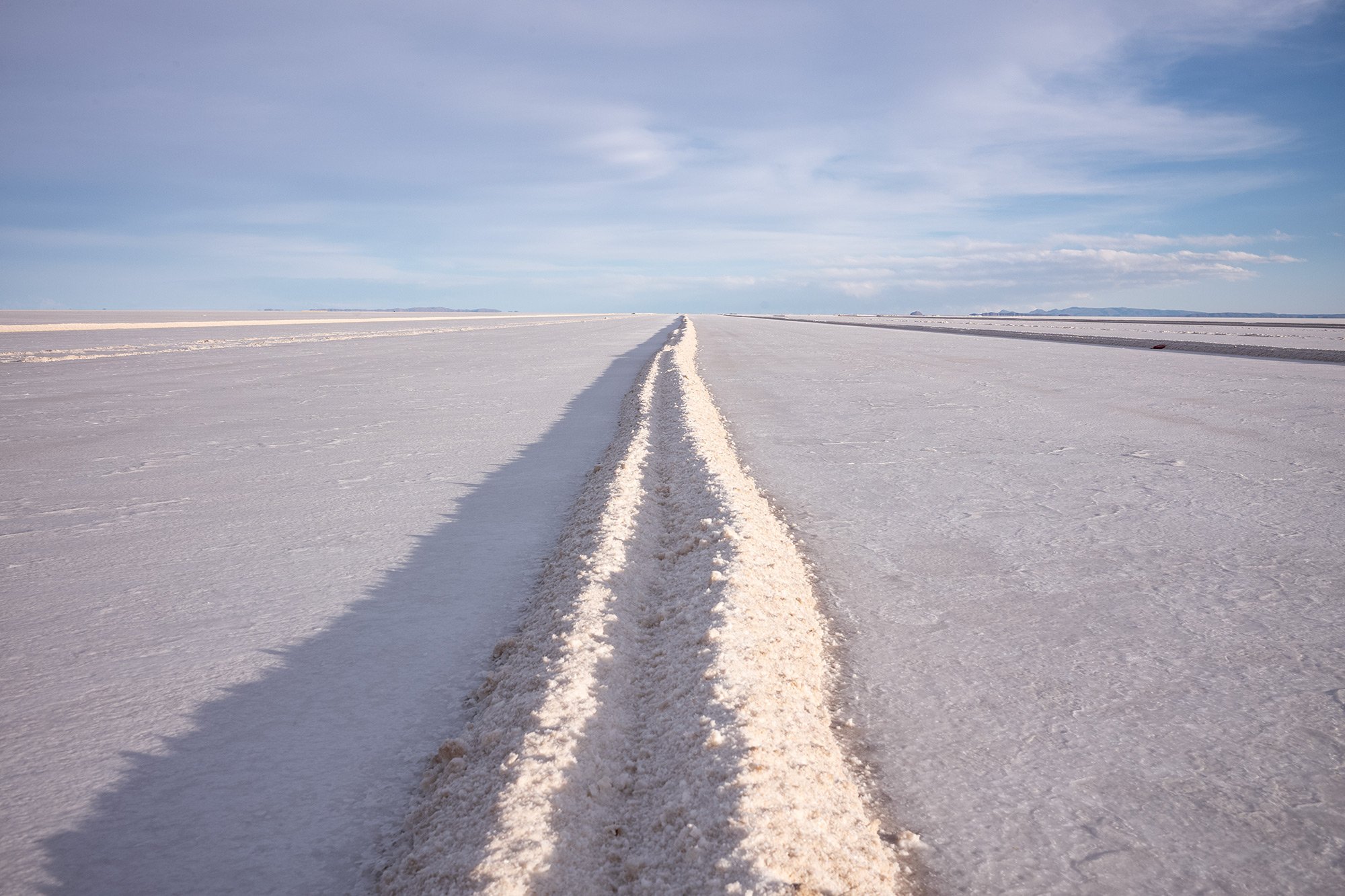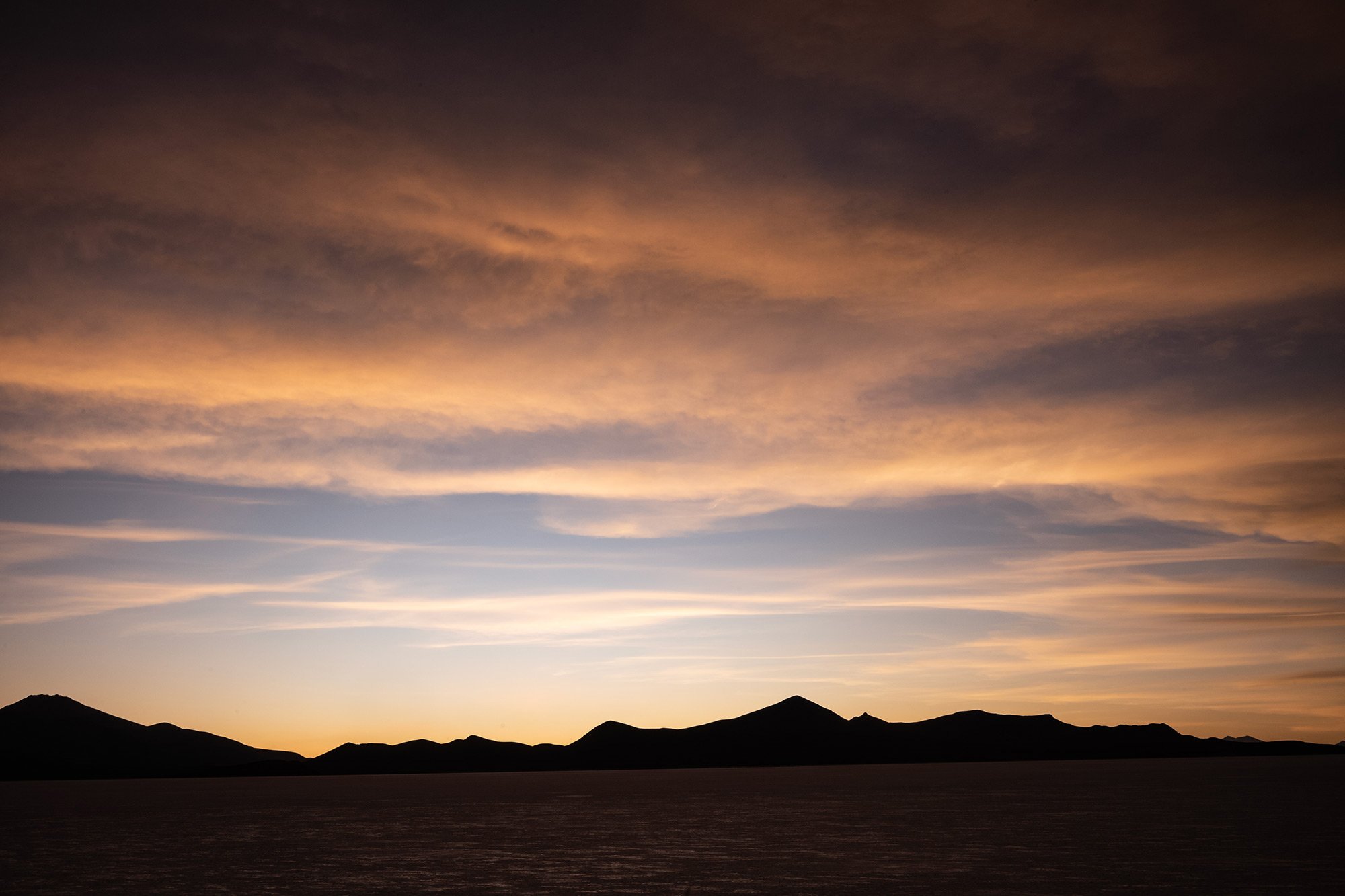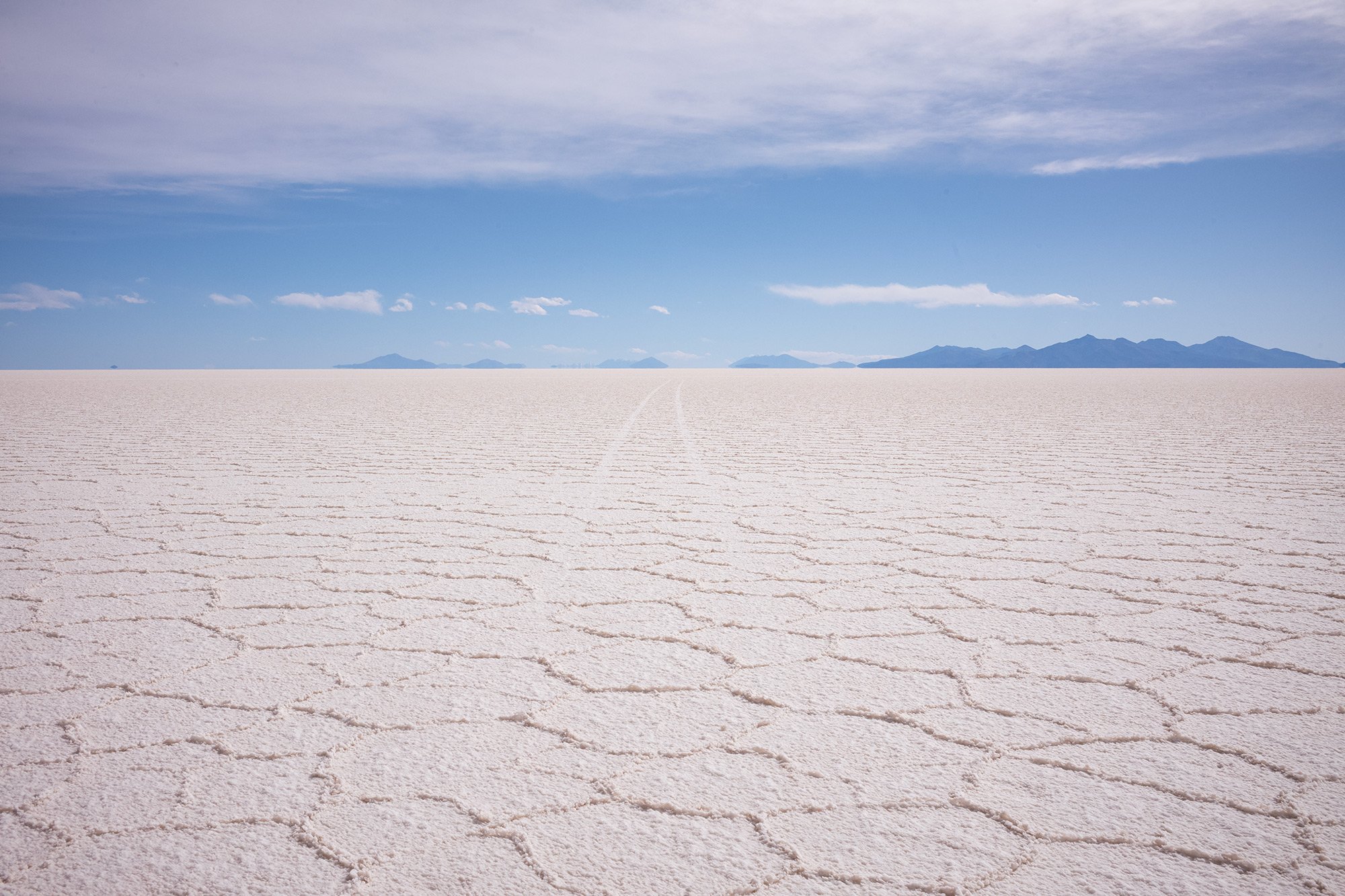
Bolivia:
Chapter one
The salt flats.
The flight to Cochabamba was a scant 40 minutes in the air.
I slept. A family sat next to me, the sisters speaking American-accented English to each other, Spanish to their parents. After we landed I found out they were in their way to Sucre and then a small village some 3 hours away from the airport. They spend Christmas there every year save for the past three due to Covid.
They had arrived in La Paz that morning from Virginia by way of Bogotá, and my seatmate was tired. Usually she takes oxygen in La Paz. She suffers from altitude sickness but this time they refused to administer oxygen to her. It was a long layover in La Paz.
As we deplaned, I wished them a Merry Christmas and a safe journey. They wished me well in return.
I was picked up from the airport by Oscar, who drove me into town and left me with Ronald, our guide for the next three days. But first a local representative of the tour company had me take a phone call. On the other end a man apologized profusely for the issue this morning. My driver hadn’t arrived and I ended up taking a taxi to the airport. Apparently there were issues with the automobile, issues that Ricardo (my driver) hadn’t communicated to the main office.
To make it up the man on the other end of the cell phone suggested that the guide take me to dinner on the night we returned to Uyuni. I told him it was ok. I had made it to the airport ok, and that dinner would be wonderful. He told me he’d arrange things and let me know. I thanked him and looked into the Pathfinder that would be our vehicle for the next three days.
Three Brazilians were squeezed into the center row of seats in the Toyota. They were Leo and Jorge and Jorge’s sister Tachyana. Leo and Jorge knew each other from high school and were spending their holiday break backpacking through Bolivia and Chile. Originally they had intended to do Peru and Bolivia, but the political situation forced them to change their plans at the last minute.
Jorge had brought his sister at his mothers behest. She wanted Tachyana to experience more. It was unclear if she was completely on board with the idea.
Ronald had been a guide for 13 years. He had been a math teacher before, but he enjoys being a guide more. He told us he was the second youngest of six. Three sisters and a brother came before him and a brother came after. He’s from a small village but moved with his parents to Uyuni in order to attend high school. He now has three children of his own, the eldest, 13, wants to be a math teacher.
Ronald tells us that another couple is scheduled to join us, but their flight had been delayed. Not wanting to delay our trip further he takes us to our first destination to wait them out there. He gives us a scheduled amount of time and tells us when to meet him back at the car.
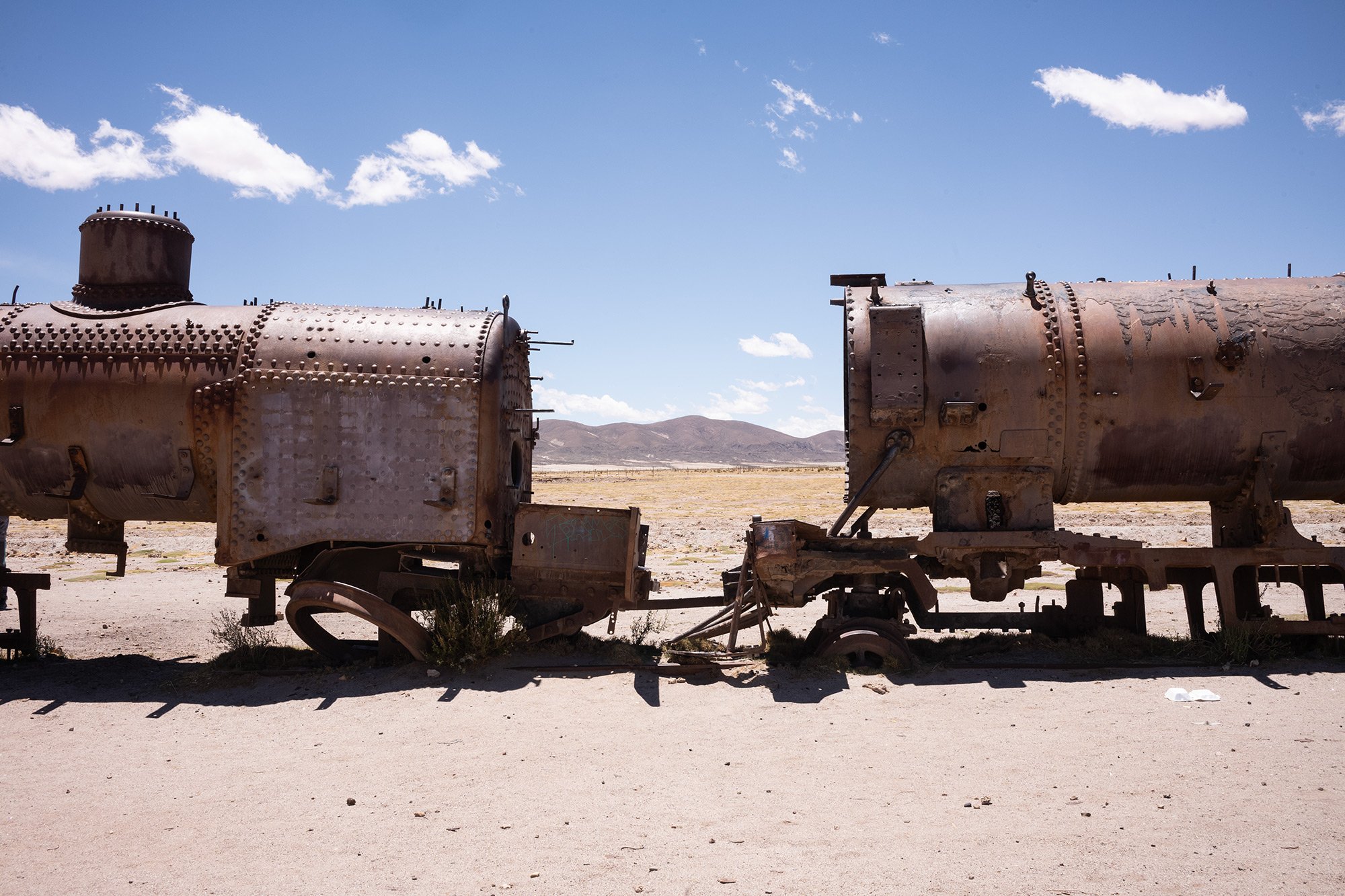
The Cemeterio de Trenes rests about three kilometers from Uyuni out in the deserted plains. There, over 100 train cars sit, deteriorating under the hot sun and in the salt winds, left over after ambitious plans to turn Uyuni into a transportation hub fell through due to tensions with neighboring countries and technical difficulties. It could be a haunting place in the right conditions, but we arrive during prime hours and the trains are crawling with visitors posing for photos. I imagine it’d be an amazing sight under the full moon.







Back at the car Ronald tell us the couple has arrived. They’re looking at the trains and we will be off shortly.
When they appear we climb into the Pathfinder and Ronald asks if any of us want to connect our phones to the sound system.I say not unless everyone wants to listen to reggaeton. He laughs and puts on an eclectic mix of English music and we are off.
Our next stop is the village of Colchani. Here, he tells us we have the opportunity to purchase snacks or handicrafts. A free salt museum is only attraction, a collection of sculptures carved out of salt. He suggests we use the restroom here as it’s only 2 Bolivianos. It’ll be 5 at our next stop, an old salt hotel in the middle of the salt flats.
We drive out of town and past salt hotels on the outskirts of town. He points out the best, perched at the edge of the flats. We bump our way onto the flats and are soon surrounded by a white, otherworldly landscape. The only things we see are other pathfinders, specs against the broader landscape.
Our destination is one of the original salt hotels in the middle of the flats, though it’s been some time since it was a functioning hotel. Now it’s used as a cafeteria and way station for travelers heading across the flats.
As we drive I asked Ronald how many cars would be driving out in the flats on any given day. In the high season there would be 3-400, he tells me. He says that the summer season also corresponds with the Asian season as Asian tourists flock to see the mirror effect caused by the summer rains. Some weep when they see it, he tells me.
Near the hotel stand a monument to the Dakar rallies that were held three times in the desert. Ronald tells us not to waste money on the locals taking forced perspective photos of tourists alongside toy animals. He said we’d be driving out into the flats to do that next.

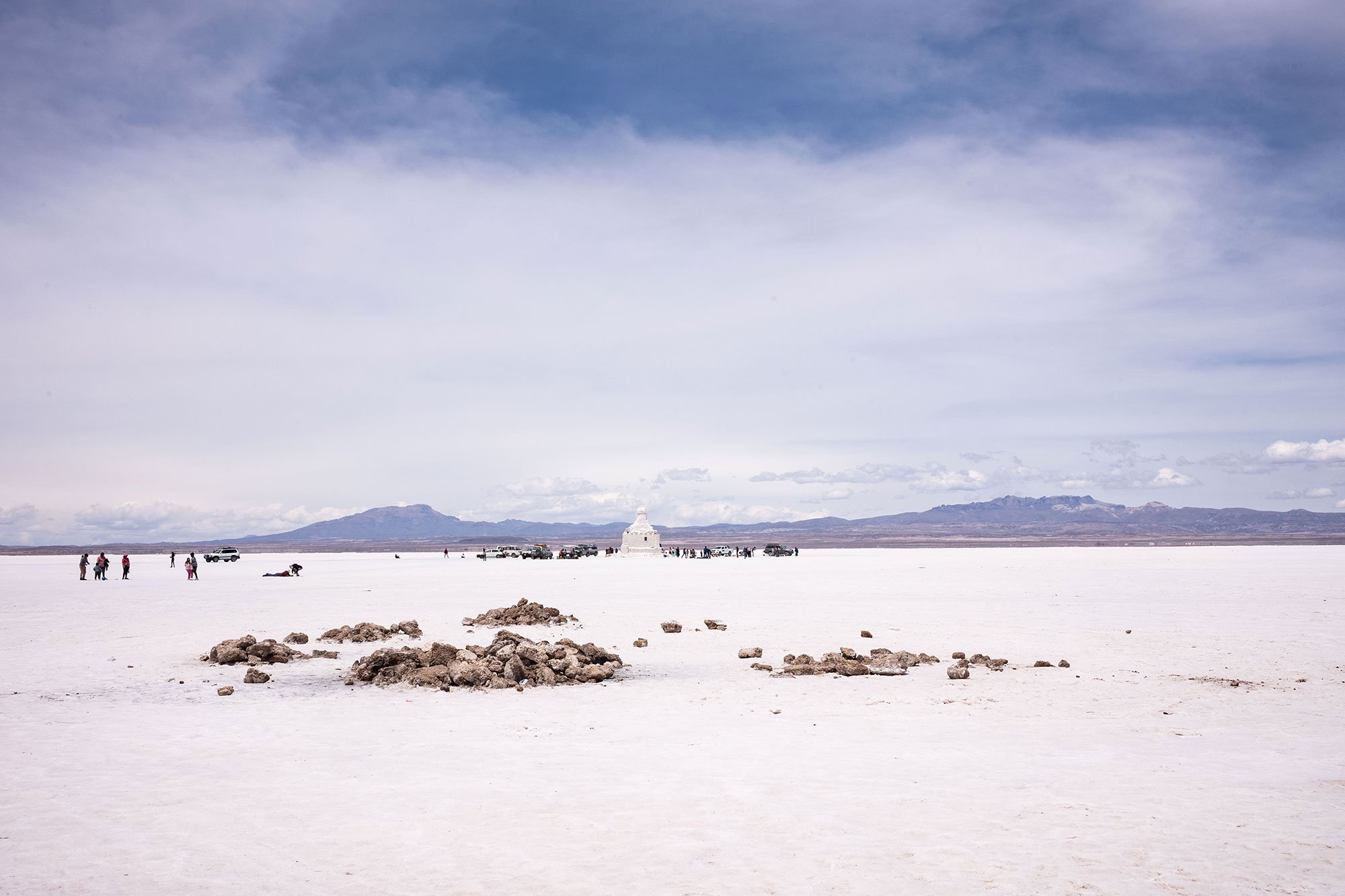
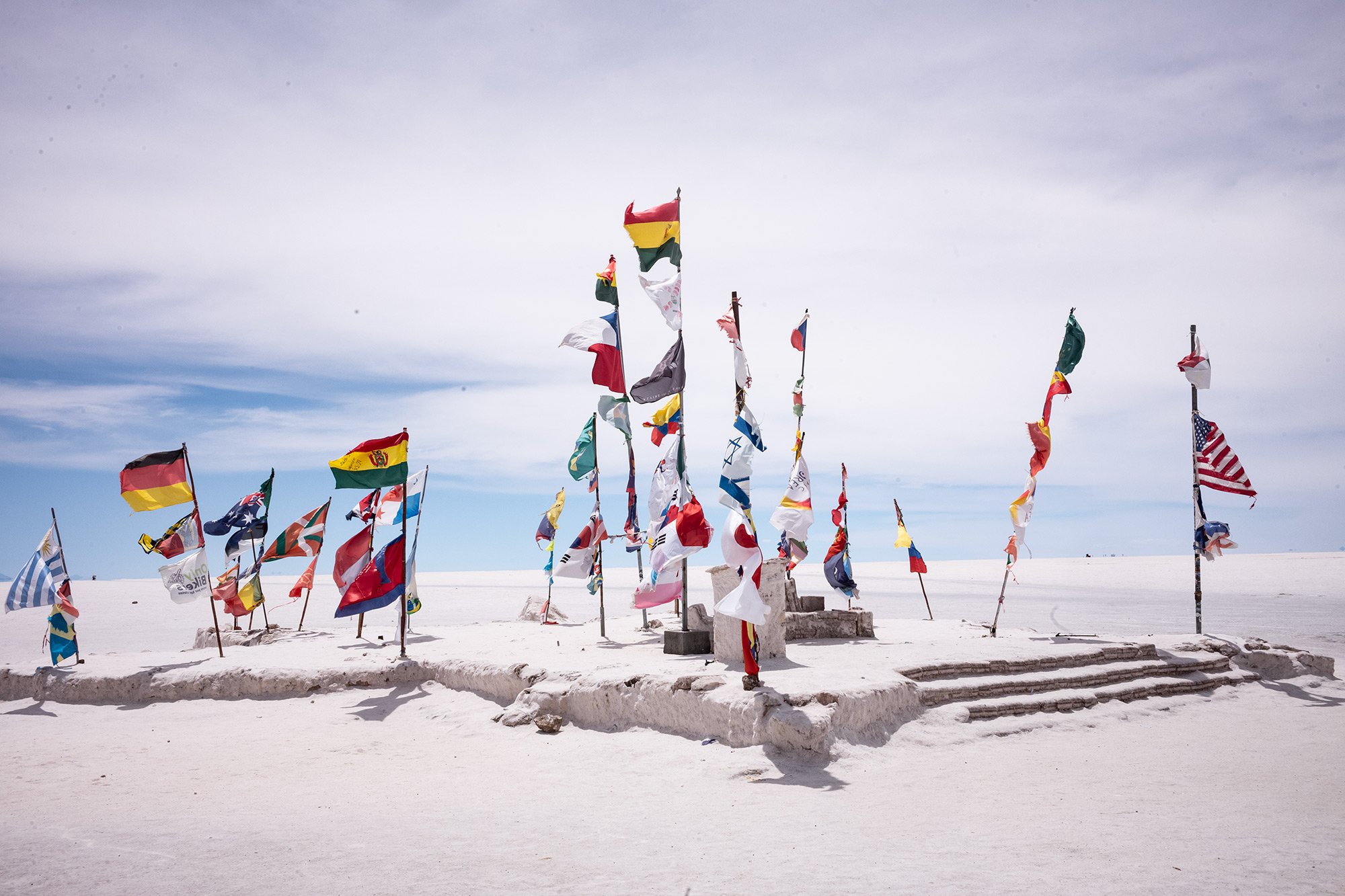
Lunch in the salt hotel is delicious. I ask who had made it and he tells us his wife did. A salad, quinoa, vegetables, meats. I invite Ronald to eat with us and we sit at a table made of salt on salt blocks. Salt columns hold the roof of the hotel up, which tapers to the salt block walls. The floor is made of ground salt.
After lunch Ronald packs the car and we drive on. In the middle of nowhere he stopps. It was time for “funny” photos. He takes out the floor mats, arranging them on the ground so he has something to lie down on. He asks for two volunteers to go first; Leo and I step up.
He has us pose in different configurations, sometimes with Leo in the foreground, sometimes myself. The photos are hilarious.
He cycles through all of us and then takes a few group shots. The piece de resistance is when he has us assume various poses and drives around us to take a time lapse photo. He’s a total pro





We ask what forms the patterns and textures in the salt and he tells that there is moisture beneath the salt. The process of evaporation causes convection cells due to the the difference in density between heavy salty water that wants to sink and the less heavy salty water that touches the surface. The cells all push against each other, forming the Voronoi patterns we see.
I ask if we can taste the salt. He says we can and we each break off a piece to taste. It’s predictably salty.
I ask what percent of Bolivian salt consumption is provided by these flats. All of it, he says
• • •.
I had sat on the salt in the shade of the Pathfinder while he was taking photos and was surprised to find my pants were totally wet. Ronald said he had told us there was a lot of moisture beneath the surface and laughingly tells me that my butt will be white with salt when it dries.
He also tells us there’s a lot of lithium in the flats and that the government has carved out a percentage of the flats to mine the mineral. They were opening up refineries and an electric car plant. Bolivia could become rich off of their deposits if corruption doesn’t get in the way.
• • •.
We continue onwards towards Incawasi Island. Leo asks me about my taste in music and movies. We talk about modern R&B artists (he’s not as familiar with 90s or classic R&B) and about world cinema. We trade recommendations and he convinces me to finally watch a number of horror films I’d been avoiding for fear of losing sleep. I said I’d have to watch them at 9am on a clear bright day like the one we were experiencing.

Incawasi island is a volcanic outcropping, a dark mass rising out of a sea of salt. Large cactus dot the island and we embark on a circuit that lead us up and around the island, through an arch and back down to where the car is parked.
Tachyana is the first to the top and the first to descend. Climbing was difficult at altitude but she easily lapped us all. I wasn’t sure how much she was enjoying the views, which were spectacular.









Back in the car we drive to the edge of the salt flats for the sunset. We stop at a place where Ronald shows us where they harvest the salt, using machines to pull them into rows of salt that they left to dry for a few days before collection. If left over ten days, however, the salt hardens too much and it’s too difficult to harvest.
A piece of leftover machinery stands to the side, a wooden plank set upon it like a table. Ronald whips out a tablecloth, a bottle of wine, and six glasses. We toast him and the day and wish each other a Merry Christmas and drink to the setting sun. Thunupa mountain watches over us in the distance. It’s one of the most beautiful sunsets I’ve seen. 🇧🇴


